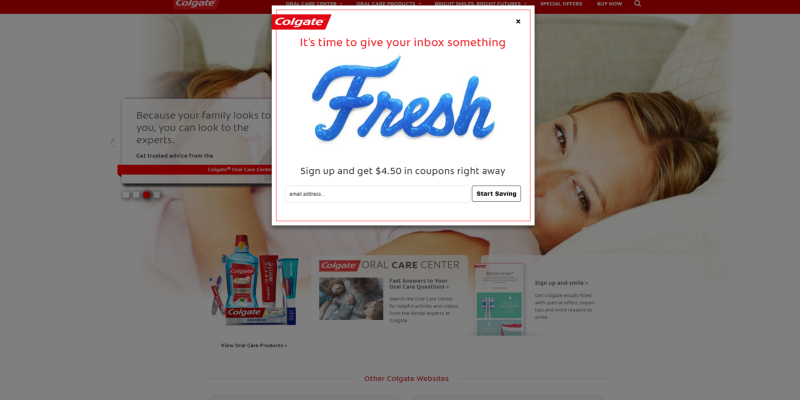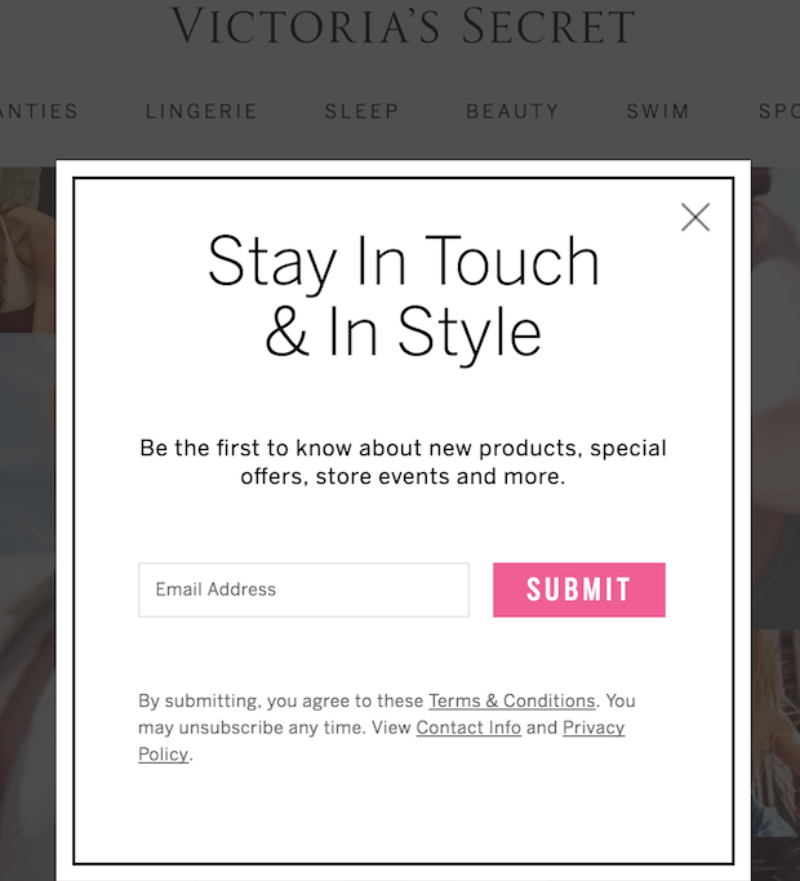Top Four Ways to Hook Your Customers with Effective Pop Ups
Pop ups are a bit of a controversial topic in the marketing world. Some claim they are a great tool for converting website visitors, while others say that they only serve to annoy your visitors and drive them away. The truth is somewhere in the middle.
When done correctly, pop ups can serve as a great tool for your website without annoying your visitors. Below are a few things you can do to hook more customers through the use of effective pop ups.
Choosing the Right Style of Pop Up
The first thing you need to do is decide on which style of pop up to go with. There are several options to choose from, but some of them might work better for you than others. Your options are:

- Entry Pop Up: An entry pop up is a pop up that emerges when a visitor first enters your site. They are a great way to initially grab someone’s attention, but they can also be annoying. People who are coming to your site for information likely don’t want to be bothered with a pop up message first thing when they enter.
- Exit Pop Up: The next option is an exit pop up. The opposite of an entry pop up, with this method your message displays when someone is trying to leave your site. Many businesses have had success with exit pop ups, as they give you one last chance to pitch to your visitor before they leave. Of course, if someone is about to leave your website, it may be hard to keep them no matter what you offer.
- A Timed Pop Up: Rather than showing your message when someone is entering or trying to leave, you can do so after a set amount of time. This allows your visitor to come in and get a taste of the information or value you’re providing, before being shown your pop up. Timed pop ups are a good alternative if you don’t want to wait for someone to leave before showing them your message, but you also don’t want to bombard them right away.
- A Scroll-based Pop Up: Next, you could have your pop up appear when your visitor has reached a certain section of your page. With this method you are only displaying the pop up to people who have a real interest in what you have to say, as they have scrolled further down in the page. And, since they’ve committed time already to reading your page, they are less likely to leave because of a pop up.
- Inactivity Pop Up: Another very useful way of showing a popup is the Inactivity event. That’s when the popup opens if the user stays inactive (does nothing) on the website for your specified time. The popup in this case is kind of a reminder to interact with users offering some deals or help while they are on the site checking a product or reading the page without any mouse movement.
- A Click Pop Up: Finally, you could have your pop up appear when someone clicks on an image or a link. This is a good way to only show your pop up to people who are interested in what you’re offering with it. You might get higher conversion rates with a click pop up, but it’s also likely to be shown less times compared to the other methods.
There’s no correct answer when it comes to choosing a style of pop up to use. You’ll have to try out different methods and see which one works best for your site. However, it’s a good idea to know the options available to you so that you can make an informed decision.
Limit the Number of Impressions
The next thing you should do is limit the number of times your pop up appears for a specific visitor. Let’s say someone comes into your website and they are greeted with an entry pop up. At this time they’re not interested in what you’re offering, so they close out of it. They are still interested in the article you wrote, however, so they continue to read. As they’re scrolling down the page, a scroll-based pop up emerges. They close out of it again.
They continue to read more, and then a time-based pop up shows up. Now they’re annoyed, and they decide to leave your site rather than deal with more pop ups. Someone who was going to head to your Contact Us page is now leaving instead. This is a common problem that a lot of websites create for themselves.
A great thing you can do is limit how often a specific user sees your pop up. After they are shown a pop up, disable the other pop ups from appearing for that visitor. You’ll have other sections of your site that you can use to try to convert your leads, so you don’t need to rely solely on pop ups. By limiting the number of pop ups a person sees, you’ll annoy them a little less, and hopefully still convert them somewhere down the line.
You can also limit the number of times you display a pop up to return visitors. If a pop up displays each time someone visits your site, they may be less likely to visit it again in the future. By only showing the pop up on initial visits, you can hopefully improve your long-term viewer numbers, and convert them through another method.

Make Your Pop Ups Relevant and Enticing
There’s nothing more annoying than a pop up that doesn’t serve any purpose. When you show a pop up to someone, it needs to be relevant to what they’re viewing.
For example, let’s say you run a social media marketing company. One of the services you offer is promoting social media accounts. But you cover other areas too, so there’s a blog about search engine optimization as well. If someone were to click on that blog, they likely wouldn’t be looking for your social follower services. A pop up offering this would only get in the way of the information. Rather, you’d want a pop-up talking about how you can also promote websites.
At the same time, you need your pop ups to entice people. Don’t just present more information or tell them about an offer. Use this space to make your offer seem irresistible. If you’re going to interrupt someone, you should at least do it in a way that might entice them towards something they want.
Make Your Pop Ups Easy to Close
Finally, no matter what you do, some people will not want to see your pop up. To avoid the risk of annoying them further, and possibly causing them to leave your site, make sure your pop ups are easy to close. There should either be a big X that someone can click or an easy to find message that lets you close out of it.
Many businesses have tried making their pop ups harder to close, in hopes that it will force people to consider their offer longer. This rarely works and it’s more likely that someone will just leave your site.
Find the Best Solution for You
If you follow the tips above, you should find yourself with more effective pop ups. Or if you need professional help, check out how to build a website for business. However, there is more you can do. To truly get the most effective pop ups, and ones that won’t drive people away, you need to try new things and test the results. Split testing is essential for pop ups, as it allows you to see what’s working and what isn’t.
Implement the advice above into your pop ups, but also try new things. If you keep the user in mind, you should be able to find a good balance between a pop up that converts well and one that doesn’t annoy everyone.
Related Posts
To make your business successful in the modern age, you need to excel at digital marketing and have a strategy that can allow you to beat out the competition.
The rapidly changing landscape of e-commerce demands businesses to create a compelling online presence. However, establishing a formidable online store demands much more than a mere digital replica of a physical storefront. It requires a deep understanding of human psychology and a strategic...
In the ever-changing digital marketing landscape, defined by transient attention spans akin to ephemeral specters, the strategic use of video has proven to be an alchemical concoction, flawlessly transmuting mere curiosity into a passionate embrace of customer interaction.
For startups in 2024, there are few aspects as important as web development.
Recently, stock photos have become a popular choice in design.
Core Web Vitals is a set of performance metrics developed by Google to measure the quality of a website's user experience.

















Comments
comments powered by Disqus